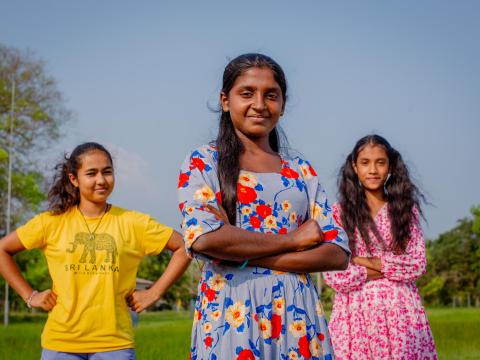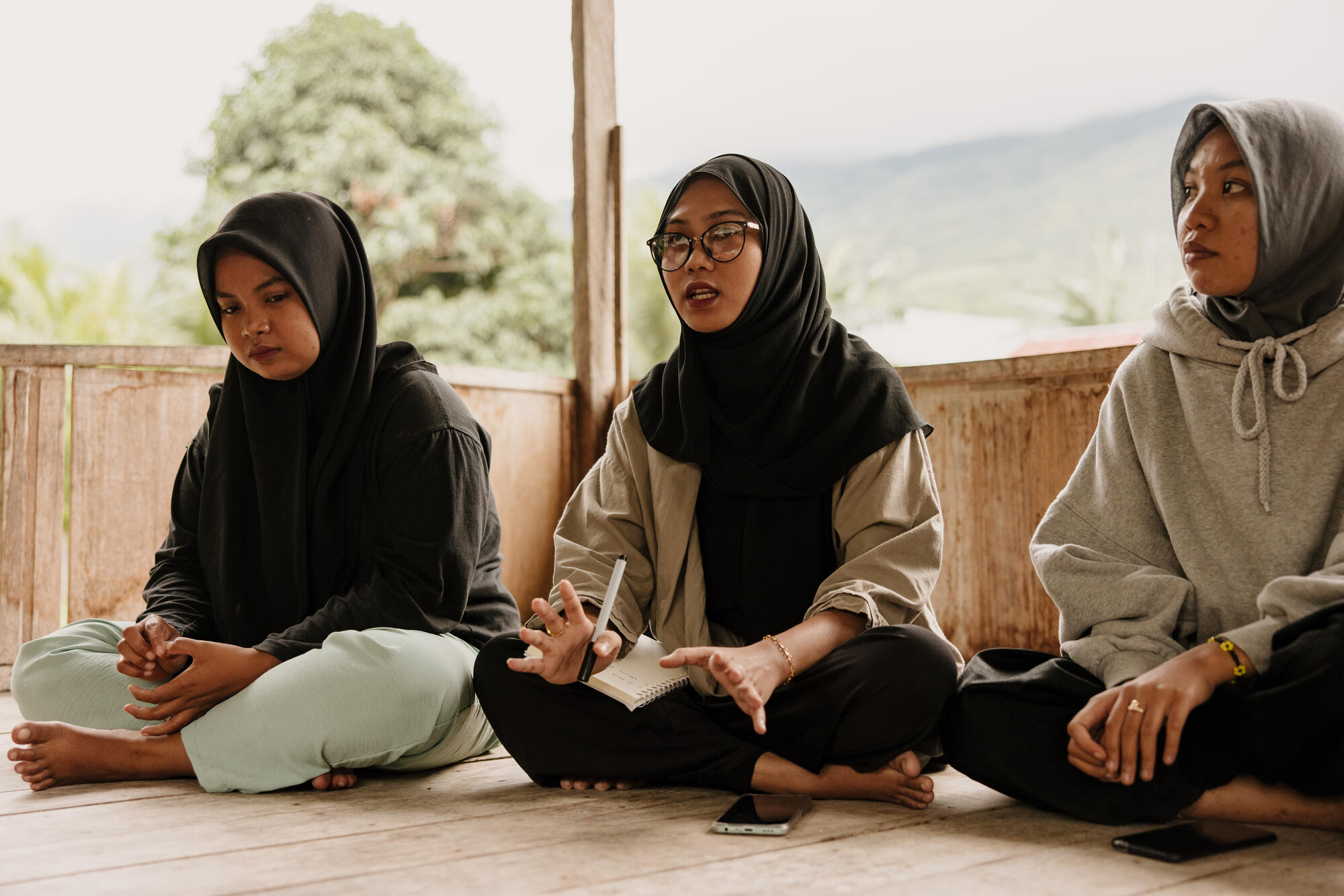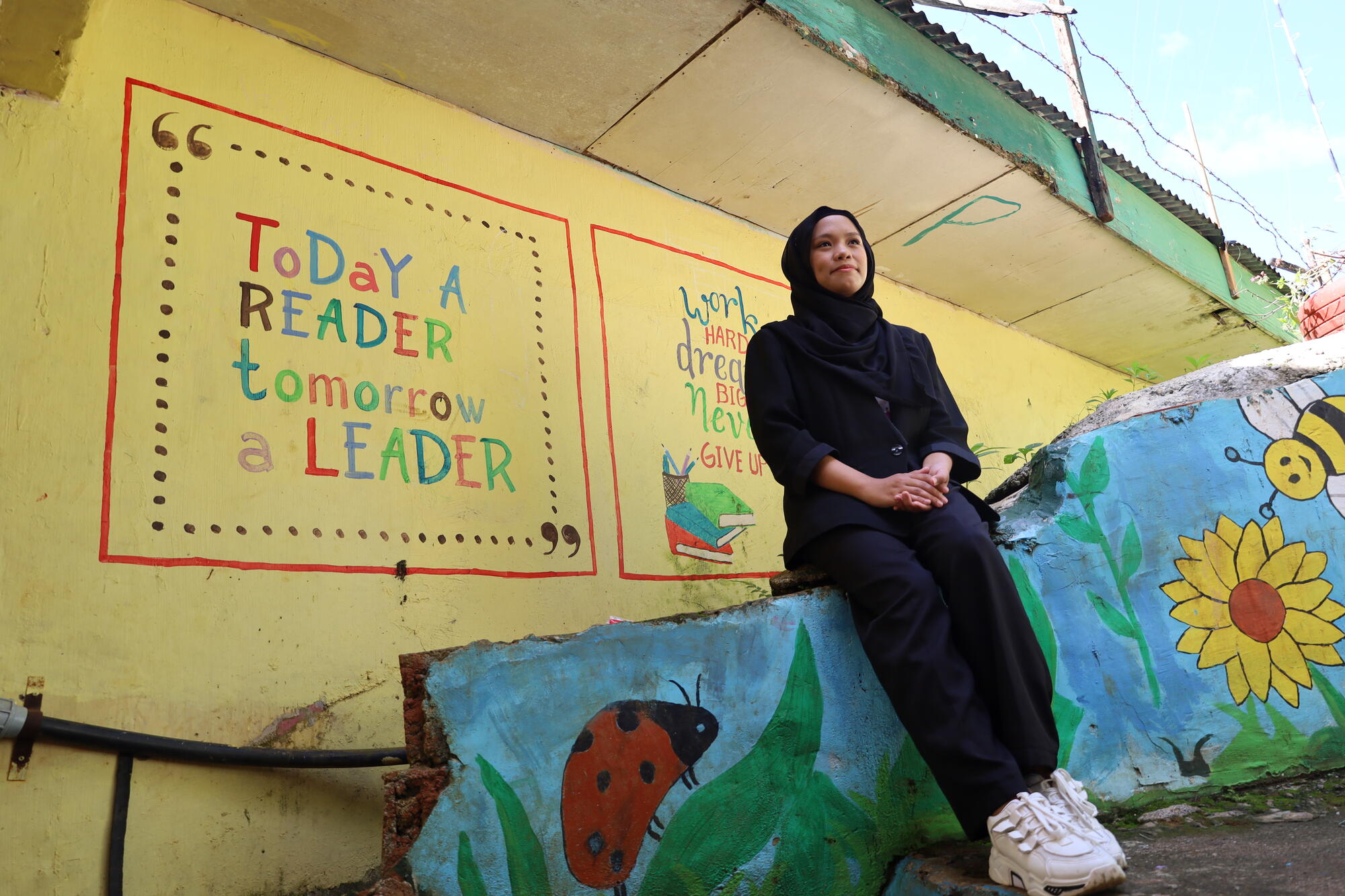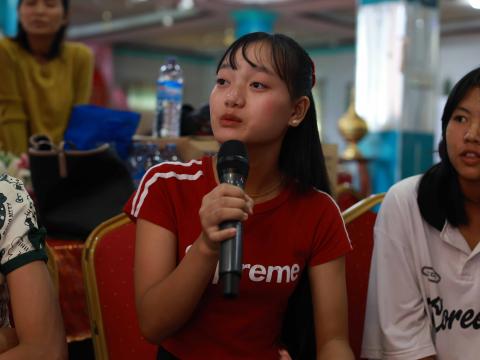
Girls are already boldly leading; It’s time we catch up
Mona Stella Mariano, Senior Advisor for Gender Equality, Disability and Social Inclusion, calls for bold, sustained action from governments, civil society actors, and community leaders across Asia and the Pacific to empower girls to lead.
11 October 2025
On this International Day of the Girl, we celebrate something extraordinary: the unstoppable force of girls who are not just surviving crises — they are leading through them.
From climate crisis to technological threats, from forced displacement to food insecurity, girls across Asia and the Pacific are facing challenges that would shake even the strongest among us. But here’s the truth: they are not just victims of these crises. They are visionaries, organisers, and leaders. They are reshaping their communities, demanding justice, and imagining futures that are bold, inclusive, and sustainable.
Now we must ask ourselves: Are we genuinely empowering them to lead?
A Generation Rising in the Asia Pacific
Girls in the Asia Pacific region face overlapping challenges that threaten their rights and futures. From child marriage and gender-based violence to disrupted education and limited leadership opportunities, these barriers are intensified by climate change, which forces girls out of school and deepens resource insecurity. Migration and displacement expose girls to further risks, including exploitation and interrupted access to services. These intersecting issues demand urgent, coordinated action to ensure girls are not just protected, but empowered to thrive.
But girls are not waiting for permission to act. Amid these challenges, a powerful shift is underway. We are seeing the rise in youth-led movements, with girls at the forefront of advocacy for climate justice, digital safety, education, and gender equality. From grassroots campaigns in rural communities to online activism that reaches global audiences, young people are organising, mobilising, and demanding change. They are forming networks, leading peaceful protests, influencing policies, and using art, media, and technology to amplify their voices.
This surge in youth advocacy is reshaping the development landscape and proving that when girls lead, entire communities move forward.
In Bangladesh, Rohingya girls in World Vision-supported communities show resilience in displacement, holding onto dreams and healing through community support. In Marawi, Philippines, World Vision has seen trauma of conflict turned into advocacy for disaster preparedness, and girls joining youths supporting emergency response.

In Indonesia, we have also seen girls in Peace Clubs, promoting empathy and inclusion through World Vision’s peacebuilding program. Girls were able to bridge religious divides, create social media campaigns and hosted events that foster unity — transforming fear into friendship.
What Girls Need to Lead Boldly
The stories of girls rising from adversity reveal a powerful truth: empowerment is not spontaneous. It requires intention, investment, and consistent support.
Girls cannot lead boldly if they are only given encouragement or one-off training sessions. They need environments where their voices are genuinely heard and respected. They need adults who listen, advocate, and walk beside them. They need role models who reflect their dreams and show them what’s possible. And they need systems that protect rather than silence, and that guarantee access to education, healthcare, and nutrition.
World Vision’s GEDSI Theory of Change reminds us that real empowerment is built on a foundation of access, agency, inclusion, and well-being. These are not optional ideals. They are the conditions that make leadership possible, and every girl deserves nothing less.

Where we must all step up
If we want girls to lead, we must do more than applaud their courage. We must build the scaffolding that sustains it. That means bold, sustained action from governments, civil society actors, and community leaders across Asia and the Pacific:
- Accountability: Youth-led movements are growing across the region, and civil society has helped expand spaces for engagement. But one critical piece is still missing: accountability. Too often, children are asked for input but never told how their voices shaped decisions — or if they did at all. Closing this feedback loop in a timely, child-friendly way is essential. It’s not just respectful; it’s what motivates girls and boys to keep participating.
- Consistency: Confidence-building matters, but it must go hand-in-hand with formal, safe spaces where girls can engage meaningfully and consistently.
- Resilience Building: Governments must invest in girl-led resilience programs, especially in crisis-prone areas. They must ensure universal access to education, and health and nutrition, including for girls in refugee and displacement contexts.
- Active & Sustained Participation: Girls must have accessible, inclusive, and sustained platforms to shape the policies that affect their lives, especially in areas like digital governance, peacebuilding, and climate action. These platforms must go beyond symbolic participation. They should be designed to meet girls where they are — in schools, online spaces, and communities — and ensure their voices are not only heard but acted upon.
This International Day of the Girl, let’s recognise that girls are already leading and it’s time we catch up. We can do this by creating the conditions that make their leadership not just possible, but powerful.
Mona Mariano is the Gender Equality and Social Inclusion Advisor for World Vision Asia Pacific. She comes with more than 15 years of experience in gender and development, programme management, civil society strengthening, and youth engagement. As the lead for Gender Equality, Disability, and Social Inclusion (GEDSI), she works with country teams and regional entities to develop and implement strategies that will respond to inequalities and discrimination that hinder the well-being and rights of girls and boys.

